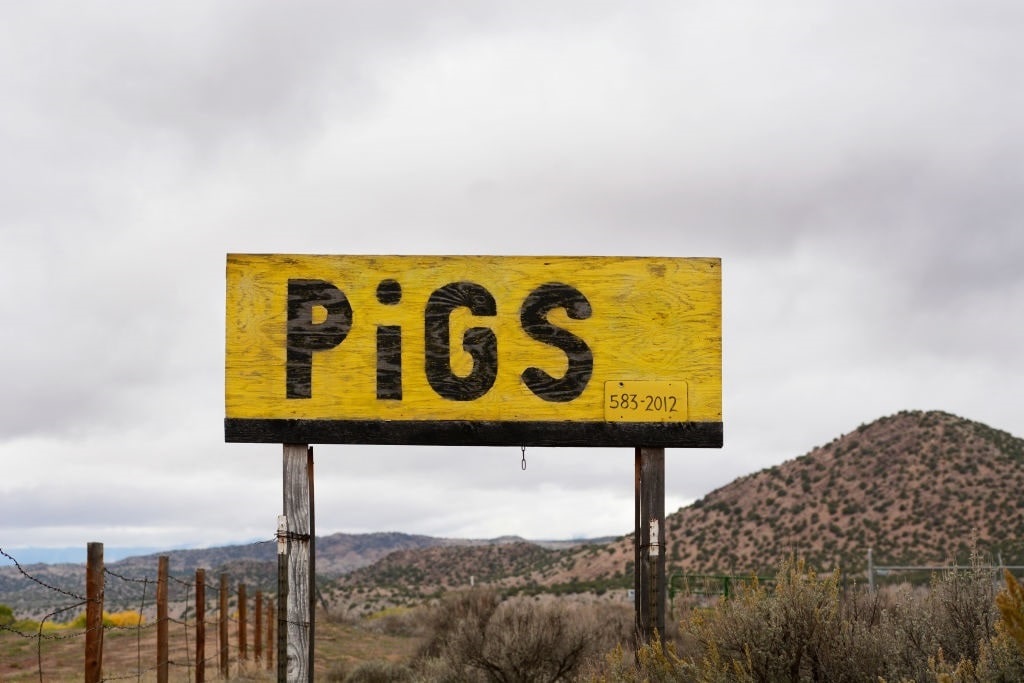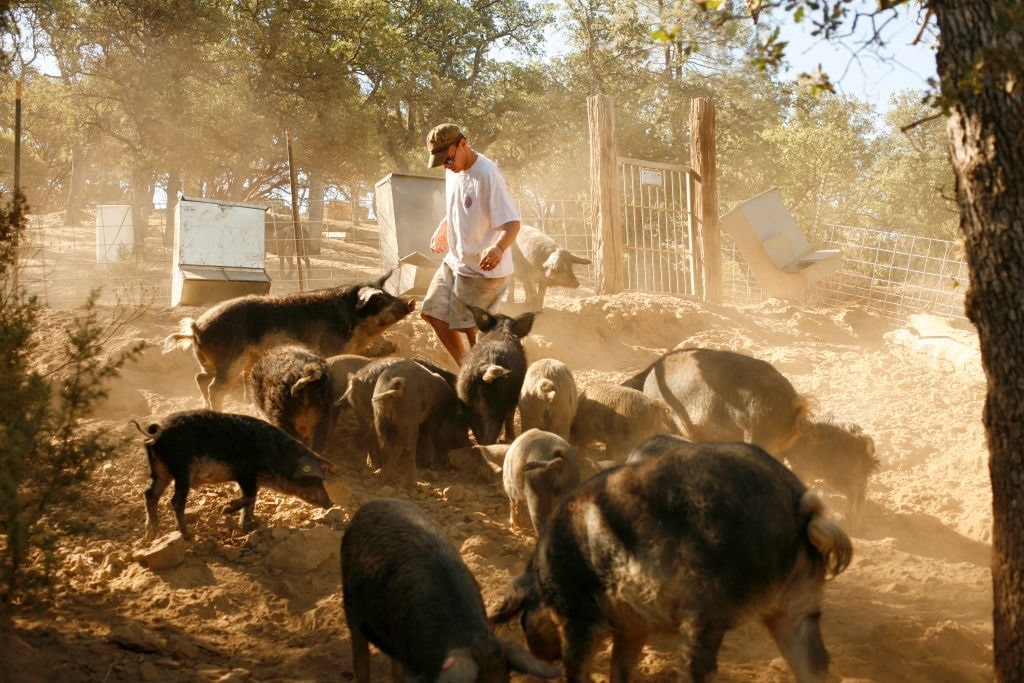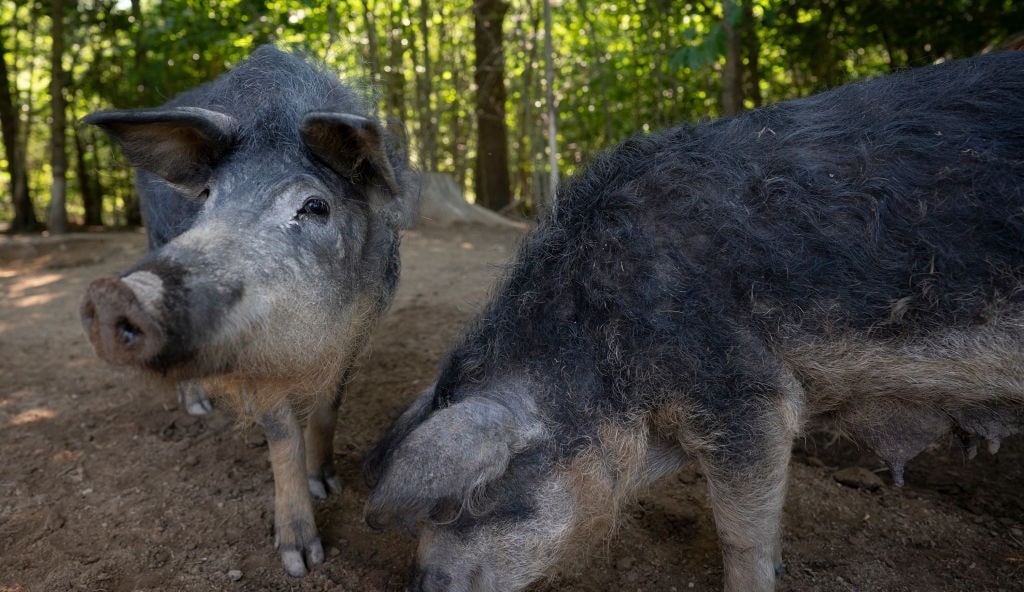As Americans wrangle over open southern borders swamped with “undocumented” visitors, another border incursion has quietly involved feral pigs. The problem of this destructive invasive species has long been witnessed in the American South, but the feral swine pressure is mounting at the northern border as Canadian “super-pigs” threaten US public health and agriculture.
In the daily barrage of bizarre realities for Americans, cross-bred wild boars disrespecting borders like fentanyl-dealing gangs is yet another surreal headline. But the threat is profound and growing exponentially. Feral pigs are an ecological train wreck – and the most prolific invasive species in North America.
The Scourge of the Razorback
I have raised and bred dozens of pigs in wintry Vermont. Pigs are incredibly intelligent: They defecate in one corner, can tell if an electric fence is charged, and are cleverer than most dogs. They are also thick-skinned and rugged, breeding two times annually with large litters that routinely exceed 10 or 12 piglets.

(Photo by Robert Alexander/Getty Images)
In wild hogs, these survival attributes have been crossed with heightened durability and aggressiveness. Feral “super-pigs” have smaller litters than domesticated swine, but can train their young to avoid hunters, forage where they have no natural predators, and travel in groups for security. Their long, sloping snout, shoulder structure, and tusks attract the Americanized moniker “Razorback.” They can reach five feet in length, grow to 400 pounds, and run 30 miles per hour.
Exterminating Pig Vermin
Some states classify feral pigs as vermin. In order to simply maintain the current numbers of feral US swine, 65% of them must be slain each year. Existing super-pig populations destroy an estimated $2.5 billion in crops annually. Efforts to hunt them include paid helicopter shooting, trapping, and baiting with poison – but still they expand in numbers and territory. The threat on the northern border creates a pincer attack on American agriculture.
Christopher Columbus and Juan Ponce de Leon are believed to have released pigs into the New World. With no natural predators and plentiful food, the animals have thrived. Powerful snouts furrow the ground for roots, grubs, and acorns, but recently planted corn seed is a culinary delight, as are birds (including grouse, turkeys, and woodcock) and their nests, reptiles, and small mammals such as whitetail deer fawns. Feral pigs have even attacked and killed humans.
The greatest threat from these animals, however, is not from digging in the dirt but from the potential to spread disease. Feral pigs can carry trichinosis and brucellosis, pseudorabies, leptospirosis, sarcocystis, and African swine fever (extinct in America since 1978). These can impact human as well as animal (and household pet) health. Feral swine can potentially transmit as many as 30 pathogens and 37 parasites. If these diseases infect US or Canadian swine operations, the impacts would be economically and ecologically devastating.
Invasive Pigs Spread

(Photo by Craig Lee/San Francisco Chronicle via Getty Images)
Feral pigs have steadily expanded their North American turf for decades, increasing by one estimate from 550 US counties in 1982 to 1,496 in 2023. Citizens in states where the pigs have not established themselves may perceive they are unaffected, but if feral pigs taint pork supplies in (for instance) North Carolina, Missouri, or Iowa, the price and availability of bacon and hams would be quickly jeopardized. Water supplies are also being tainted for animals and humans alike.
Efforts to staunch the swineherd hoof-hold in North America have included hunting for meat, assisted by dogs. Ironically, progressive animal rights initiatives in many states oppose hunting, trapping, and the use of dogs. As bears, coyotes, and other populations consequently expand, so too could feral pigs lacking these countermeasures.
Feral super-pigs have heightened senses of smell. They are aggressive, smart, and fast, requiring “scent dogs” (including coonhounds) to track them down and then “catch dogs” (such as American pit bull terriers and American bulldogs) to release and effectively hold down or corner a pig until the hunters can arrive to finish the job. This will pit animal rights idealists against the practical challenges presented by this super-survival species of Sus scrofa.
Winter-Rugged Swine
Canada’s super-swine are particularly resilient, adapted to bitterly cold temperatures and housing themselves in snow caves dubbed “pigloos.” Border states Minnesota, North Dakota, and Montana have implemented aggressive policies to keep these snouted miscreants in the Great White North, but there will be no border wall. Vermont has experienced periodic incursions by these crafty critters – they swim across the Connecticut River from neighboring New Hampshire! (They disrespect a state border as easily as national.)
Some farmers have resorted to excavating deep, steep-walled trenches around fields and crops to deter the crafty swine invaders. (This system might also thwart humans at the southern border.) But trenching creates dangers for humans who may fall prey in the pigs’ stead. Effective responses may entail unpleasant trade-offs: Feral pigs have demonstrated a willingness to attack humans as well as pets, so some risks (such as Kaput Feral Hog Lure, laced with rodenticide warfarin) may eventually be necessary.
Watchfulness at the Border
For now, America eyes its northern border for a Canadian super-pig invasion while watching its southern boundaries being overrun with opioids and starving masses. Unfortunately, there are only so many resources to go around for both.




